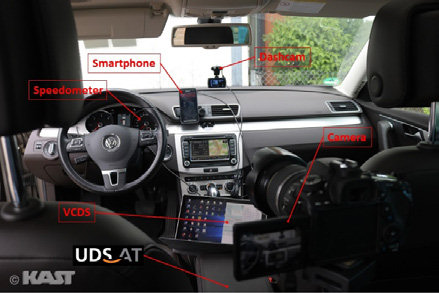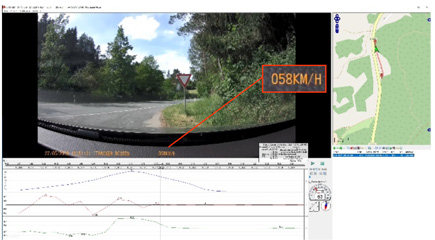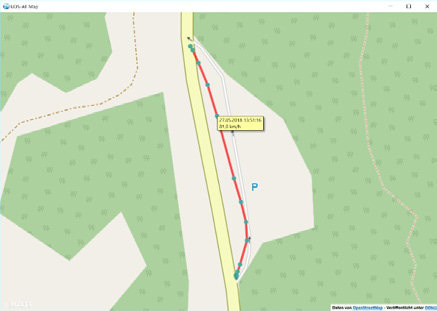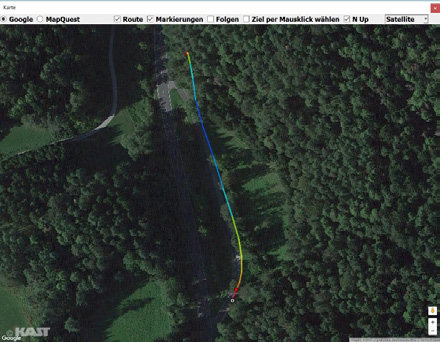More information
Main author
Uwe Fürbeth
Co-Authors
Armin Kast
Type of media
Publication type
Lecture
Publication year
2018
Publisher
27. EVU Conference, Dubrovnik
Citation
-

The UDS-AT offers the option of picking up on-board signals directly from the CAN bus or via the CiA447 interface, thus saving, for example, the in-vehicle speed value directly as a numerical value. In addition, there is the option of feeding a pulse-based signal and additionally an external GPS signal into the meter. The improved acceleration sensor technology of the UDS can be stored with an increased frequency of up to 1000 Hz and is thus available as a high-precision reference channel. This opens up options to analyze in detail the vehicle’s own speed signal via the IVN (In-Vehicle Network) as well as any GPS speed signal, which can also come from a so-called dashcam, for example. In comparison to a reference speed, which is obtained by integration from the acceleration time course, the time offset can be quantified, for example, for the GPS speed. The authors, engineers at Kast GmbH, made various driving tests with the aforementioned measuring technology and analyzed the recorded data accordingly. The results show that in particular GPS-based speed information regularly shows a considerable time delay. In addition, the in-vehicle speed value sometimes deviates significantly from the real-time data. The article shows the differences between the different types of recording and thus provides information to consider when evaluating GPS signals and values from vehicle-mounted ECUs.



(EVU-members can download the full article)